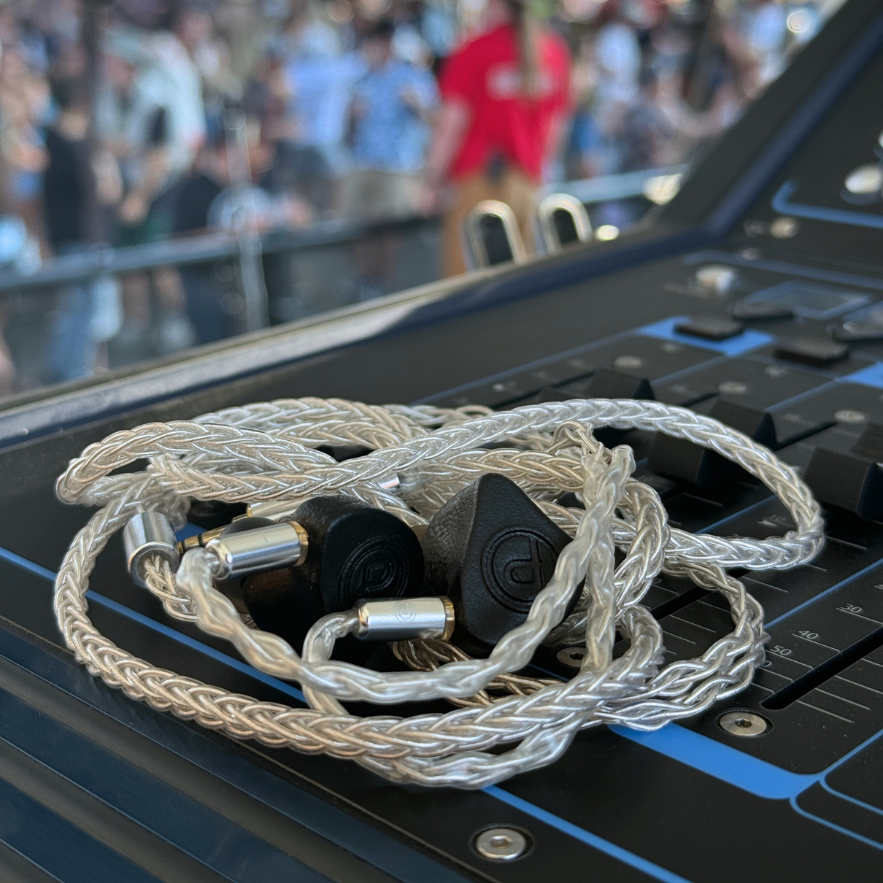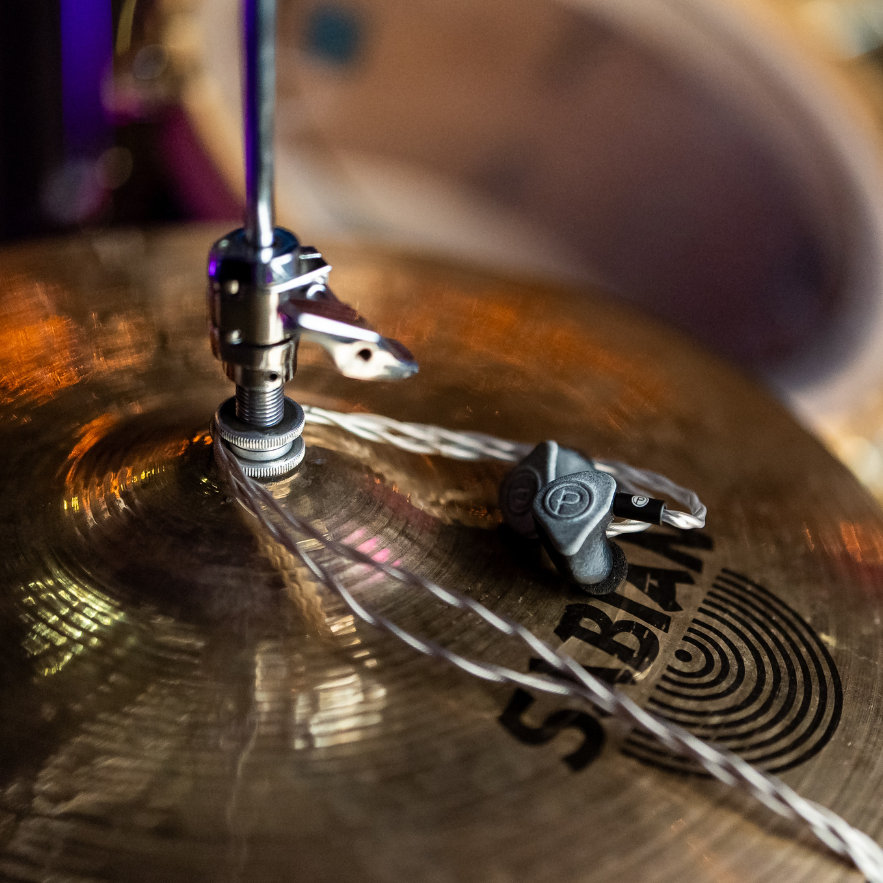In-ear monitors (IEMs) have become indispensable tools for musicians, audiophiles, and professionals who demand superior audio quality and noise isolation. But what makes IEMs so effective? Let’s delve into the science behind these sophisticated devices and understand how they work to deliver unparalleled audio experiences.
Ear Tips: The ear tips of IEMs are crucial for achieving a good seal and comfort. They come in various materials such as silicone, foam, and hybrid types. The right ear tip can significantly affect the sound quality and isolation of the IEM.
1. Signal Reception: The audio signal, typically from a personal monitor system or an audio source like a smartphone or a mixing console, travels through the cable to the IEMs. This cable not only transmits the signal but also ensures its integrity by minimizing interference and loss.
2. Driver Activation: Upon reaching the IEM, the audio signal activates the drivers. Each type of driver (dynamic, balanced armature, or electrostatic) converts the electrical signal into mechanical energy in a slightly different way:
Dynamic Drivers: The electrical signal flows through the voice coil attached to the diaphragm. This creates a magnetic field that interacts with the magnets in the driver, causing the diaphragm to move back and forth, producing sound waves.
Balanced Armature Drivers: The electrical signal causes the armature to pivot within the magnetic field, which moves the diaphragm. This action produces sound waves with high efficiency and detail, particularly in the mid and high frequencies.
Electrostatic Drivers: The electrical signal generates an electrostatic field that moves the diaphragm. These drivers are highly detailed and accurate, particularly effective for high-frequency sounds.
3. Crossover Functionality: In IEMs with multiple drivers, the audio signal is split into different frequency bands by crossovers. Each driver receives the frequencies it is best equipped to handle. For example, a dynamic driver may handle low frequencies (bass), while balanced armature drivers handle mid and high frequencies. This division ensures clarity and precision across the entire sound spectrum.
4. Sound Delivery: The sound waves produced by the drivers travel through the ear tips and into the ear canal. The seal created by the ear tips is crucial as it prevents external noise from interfering with the sound and enhances the bass response. The snug fit ensures that the sound is directed into the ear canal without leakage, providing a clear and immersive listening experience.
5. Ear Canal Interaction: Once the sound waves enter the ear canal, they travel toward the eardrum, causing it to vibrate. These vibrations are then transmitted through the bones of the middle ear to the cochlea in the inner ear. The cochlea converts these vibrations into electrical signals that the brain interprets as sound.
6. Sound Perception: The brain processes these electrical signals, allowing you to perceive and enjoy the music or audio content with high fidelity and detail. The effectiveness of IEMs in isolating external noise and delivering precise sound makes them invaluable for live performances, studio monitoring, and critical listening.
For more information and a closer look at the latest IEM technology, shop our Unity IEMs - available now.
Anatomy of In-Ear Monitors
At their core, IEMs are miniature loudspeakers that fit snugly into the ear canal. Unlike traditional earbuds, IEMs create a seal within the ear canal, which helps in blocking out external noise and improving sound clarity. This seal is critical for achieving the high level of sound isolation that IEMs are known for.Components of IEMs:
Drivers: The heart of an IEM is its driver, the component responsible for converting electrical signals into sound. There are different types of drivers used in IEMs:
- Dynamic Drivers: These operate like miniature versions of traditional loudspeakers, using a diaphragm attached to a voice coil that moves within a magnetic field to produce sound. Dynamic drivers are known for their powerful bass response and are commonly used in IEMs.
- Balanced Armature Drivers: These are more compact and sensitive than dynamic drivers, making them ideal for the mid and high frequencies. They work by using an armature that pivots within a magnetic field, moving the diaphragm to produce sound. Balanced armature drivers are often used in multi-driver IEMs to handle specific frequency ranges.
- Electrostatic Drivers: Found in high-end IEMs, these drivers use an electrostatic field to move the diaphragm. They are renowned for their extremely accurate and detailed sound reproduction but require special amplification.
Ear Tips: The ear tips of IEMs are crucial for achieving a good seal and comfort. They come in various materials such as silicone, foam, and hybrid types. The right ear tip can significantly affect the sound quality and isolation of the IEM.
How IEMs Work
Understanding how IEMs function requires a look at the journey of the audio signal from the source to your ears. Here’s a detailed breakdown of the process:1. Signal Reception: The audio signal, typically from a personal monitor system or an audio source like a smartphone or a mixing console, travels through the cable to the IEMs. This cable not only transmits the signal but also ensures its integrity by minimizing interference and loss.
2. Driver Activation: Upon reaching the IEM, the audio signal activates the drivers. Each type of driver (dynamic, balanced armature, or electrostatic) converts the electrical signal into mechanical energy in a slightly different way:
3. Crossover Functionality: In IEMs with multiple drivers, the audio signal is split into different frequency bands by crossovers. Each driver receives the frequencies it is best equipped to handle. For example, a dynamic driver may handle low frequencies (bass), while balanced armature drivers handle mid and high frequencies. This division ensures clarity and precision across the entire sound spectrum.
4. Sound Delivery: The sound waves produced by the drivers travel through the ear tips and into the ear canal. The seal created by the ear tips is crucial as it prevents external noise from interfering with the sound and enhances the bass response. The snug fit ensures that the sound is directed into the ear canal without leakage, providing a clear and immersive listening experience.
5. Ear Canal Interaction: Once the sound waves enter the ear canal, they travel toward the eardrum, causing it to vibrate. These vibrations are then transmitted through the bones of the middle ear to the cochlea in the inner ear. The cochlea converts these vibrations into electrical signals that the brain interprets as sound.
6. Sound Perception: The brain processes these electrical signals, allowing you to perceive and enjoy the music or audio content with high fidelity and detail. The effectiveness of IEMs in isolating external noise and delivering precise sound makes them invaluable for live performances, studio monitoring, and critical listening.
Conclusion
Understanding the science behind IEMs reveals why they are the preferred choice for many audiophiles and professionals. The combination of advanced driver technologies, noise isolation, and high-fidelity sound reproduction makes IEMs a powerful tool for anyone serious about their audio experience. Investing in a quality pair of IEMs can significantly enhance your listening experience.For more information and a closer look at the latest IEM technology, shop our Unity IEMs - available now.



